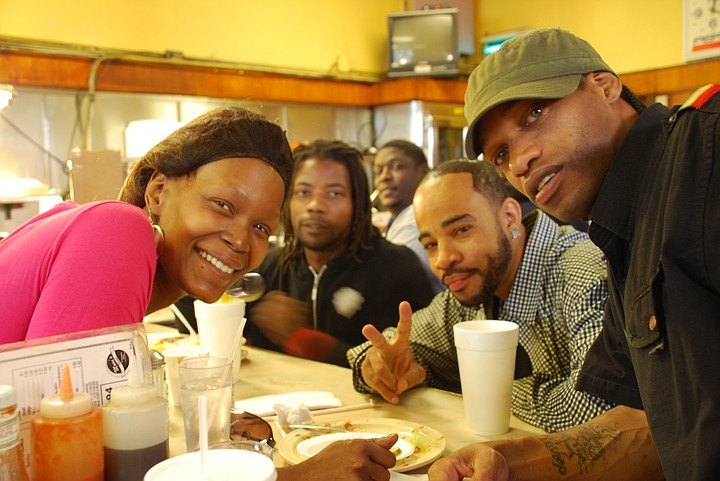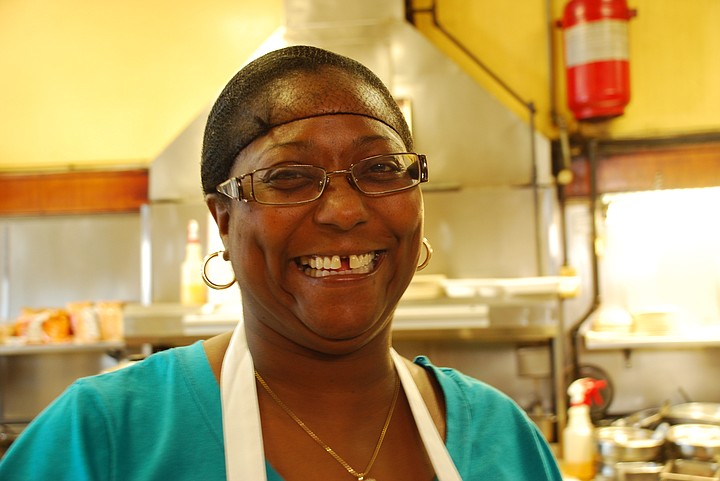 Facebook
Facebook
 X
X
 Instagram
Instagram
 TikTok
TikTok
 Youtube
Youtube
It’s around 2am, and I’ve taken the “L” train in the wrong direction. There are two “Western” stops on the blue line. I could have sworn that I knew which was which – one located in a yuppie neighborhood, the other in the West Side known for its gangs and poverty. Leaving the station, I notice young preppies flowing in and out of a nearby bar. I immediately realize that I am on the wrong side of Western.

Jay Rockwell, a friend of mine and the rap artist Cateye (reverbnation.com/jayrockwell), has invited me into his West Side world of Chicago. He takes his last name from the projects where he grew up. The Rockwell Projects no longer exist (the eight concrete dorm-like buildings were demolished some years back), but the pride and closeness of this community is still felt. Jay’s roots go even further into the area, primarily due to his grandfather. Reverend John Wesley Phillips was such a key figure in the community that a major street is named after him.
Jay and I spend the next day walking around his old neighborhood. He first takes me to Moon’s Sandwich Shop – a landmark in the area. Built in 1933, it is said to be one of Chicago’s first sandwich shops. It’s a place where everyone knows everyone. All of the seats hug the curved countertop in front of the grilling cooks, while multiple conversations travel around the open-aired diner. You hear people familiarly yelling at each other from across the room, evoking feelings of a kitchen in someone’s home.

Jay saunters into the restaurant and the energy instantly shifts. Penny, a sweet, gap-tooth-smiling cook who assembles Moon’s Famous Corned Beef Sandwich, asks how Jay is doing in Los Angeles and when his next local show will be. Although Jay’s a celebrity in the area, everyone in the cafe is his extended family – the bond is obvious.
We walk out of the diner’s front door, and across the intersection I notice a Walgreen’s store. “That was the Black Panthers’ Chicago headquarters back in the day,” Jay points out.
We’re at the Madison Street and Western Avenue intersection – an area that denotes the south-north line (Madison Street) and the west-east border (Western Avenue) of Chicago. It was a hotbed of activist demonstrations and organizations during the 1960s and 70s. We walk a block further and stop at a vacant lot. Jay explains that he was part of The Stones (a gang best known as the Blackstone Rangers). Their headquarter building used to occupy this plot of land. The Stones were formed out of Chicago’s Blackstone Avenue in the late 1950’s, and later became one of the most dangerous and powerful gangs in Chicago.
“So how dangerous is it really around here?”
‘You’re with me, it’s OK.’
“How about when I’m walking around here by myself, especially at night?”
‘People here see a white guy and they think either a drug addict in search or an undercover officer. You don’t look like a druggie, so you’re an undercover officer. You’re fine. But try not to come here without me.”
Jay now spends his time in Los Angeles recording and promoting his music, so walking down these streets he is shot back in time as he absent-mindedly shares more of his memories. We continue a block while Jay details where, as a kid, he pickpocketed pedestrians to get spending money.
“So did you guys ever go into downtown?”
‘Only on certain holidays and special occasions. Other than that no. We felt uncomfortable and not welcomed.’
But the times have changed. Jay’s Chicago visits wouldn’t be complete without spending many hours downtown promoting his music and booking shows. The West Side and Chicago proper are worlds apart, but with Jay’s help I’m now lucky to know both of them.

It’s around 2am, and I’ve taken the “L” train in the wrong direction. There are two “Western” stops on the blue line. I could have sworn that I knew which was which – one located in a yuppie neighborhood, the other in the West Side known for its gangs and poverty. Leaving the station, I notice young preppies flowing in and out of a nearby bar. I immediately realize that I am on the wrong side of Western.

Jay Rockwell, a friend of mine and the rap artist Cateye (reverbnation.com/jayrockwell), has invited me into his West Side world of Chicago. He takes his last name from the projects where he grew up. The Rockwell Projects no longer exist (the eight concrete dorm-like buildings were demolished some years back), but the pride and closeness of this community is still felt. Jay’s roots go even further into the area, primarily due to his grandfather. Reverend John Wesley Phillips was such a key figure in the community that a major street is named after him.
Jay and I spend the next day walking around his old neighborhood. He first takes me to Moon’s Sandwich Shop – a landmark in the area. Built in 1933, it is said to be one of Chicago’s first sandwich shops. It’s a place where everyone knows everyone. All of the seats hug the curved countertop in front of the grilling cooks, while multiple conversations travel around the open-aired diner. You hear people familiarly yelling at each other from across the room, evoking feelings of a kitchen in someone’s home.

Jay saunters into the restaurant and the energy instantly shifts. Penny, a sweet, gap-tooth-smiling cook who assembles Moon’s Famous Corned Beef Sandwich, asks how Jay is doing in Los Angeles and when his next local show will be. Although Jay’s a celebrity in the area, everyone in the cafe is his extended family – the bond is obvious.
We walk out of the diner’s front door, and across the intersection I notice a Walgreen’s store. “That was the Black Panthers’ Chicago headquarters back in the day,” Jay points out.
We’re at the Madison Street and Western Avenue intersection – an area that denotes the south-north line (Madison Street) and the west-east border (Western Avenue) of Chicago. It was a hotbed of activist demonstrations and organizations during the 1960s and 70s. We walk a block further and stop at a vacant lot. Jay explains that he was part of The Stones (a gang best known as the Blackstone Rangers). Their headquarter building used to occupy this plot of land. The Stones were formed out of Chicago’s Blackstone Avenue in the late 1950’s, and later became one of the most dangerous and powerful gangs in Chicago.
“So how dangerous is it really around here?”
‘You’re with me, it’s OK.’
“How about when I’m walking around here by myself, especially at night?”
‘People here see a white guy and they think either a drug addict in search or an undercover officer. You don’t look like a druggie, so you’re an undercover officer. You’re fine. But try not to come here without me.”
Jay now spends his time in Los Angeles recording and promoting his music, so walking down these streets he is shot back in time as he absent-mindedly shares more of his memories. We continue a block while Jay details where, as a kid, he pickpocketed pedestrians to get spending money.
“So did you guys ever go into downtown?”
‘Only on certain holidays and special occasions. Other than that no. We felt uncomfortable and not welcomed.’
But the times have changed. Jay’s Chicago visits wouldn’t be complete without spending many hours downtown promoting his music and booking shows. The West Side and Chicago proper are worlds apart, but with Jay’s help I’m now lucky to know both of them.
Comments